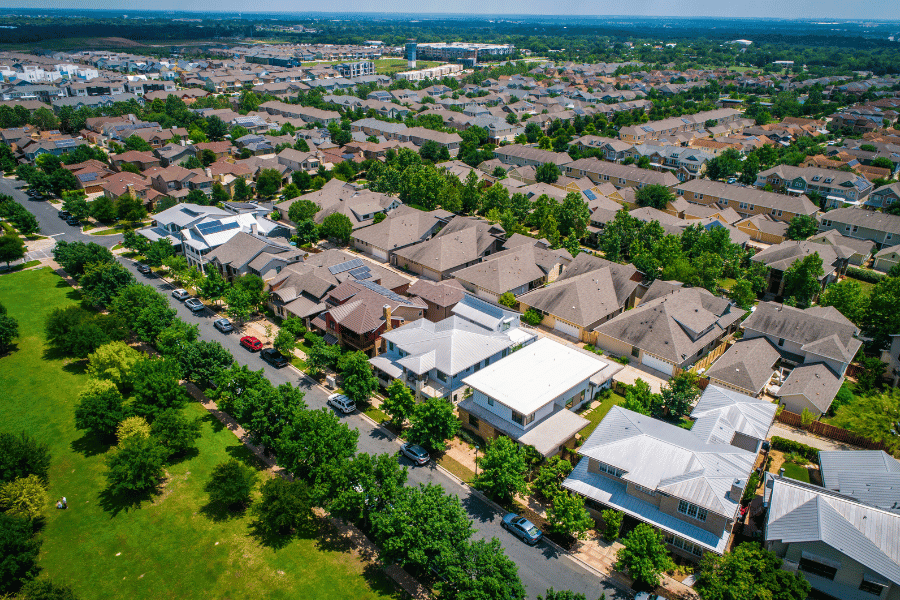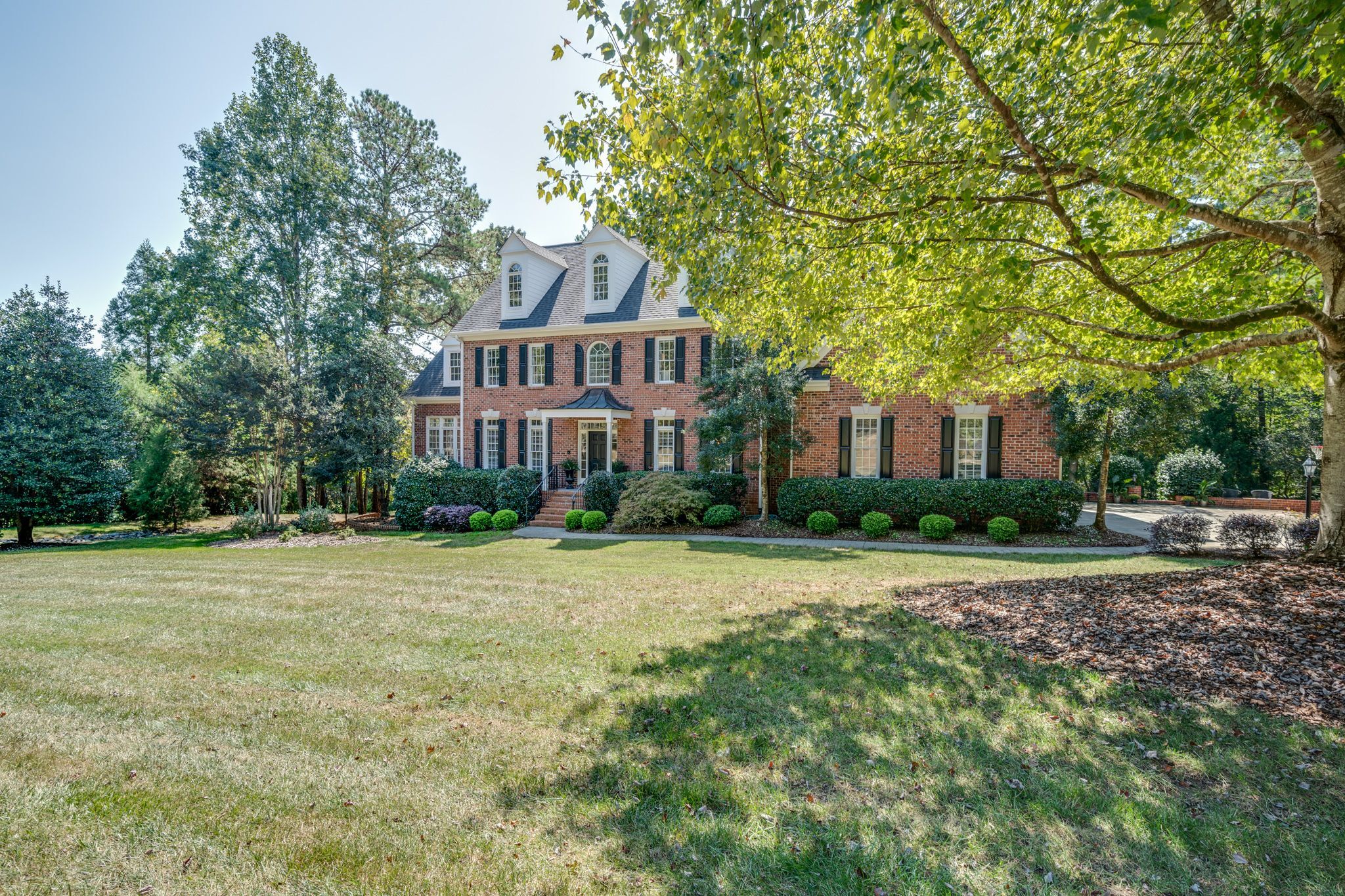The Evolution of Real Estate

The Evolution of Real Estate
Real estate has been around for much longer than most people would think. Here is everything you need to know about the evolution of real estate.
For almost all of human history, our ancestors have moved places, leaving behind trace signs of their existence through cave drawings, tools, and artifacts. However, they gradually ended the hunter-gatherer lifestyle and transitioned into establishing settlements. These settlements ultimately changed into what we know today as real estate.
Over the years, real estate has changed dramatically. It has shaped civilizations, economies, and lifestyles for as long as humans have lived. From ancient barter systems to property ownership to the real estate industry. It has been transformed through innovation and societal shifts.
Experts say that the last 10-12 years have been the most consequential time in the American real estate industry. We have lessened the rate of foreclosures, low inventory, and fierce competition in a thriving real estate market.
Homeownership is up to 65.7% in 2023 and is forecasted to rise in the upcoming years. Whether you are interested in the history of real estate or buying a home, you should be aware of the evolution of real estate.
Keep reading to learn about the evolution of real estate.
Chapters
1. The Beginning of Real Estate
The real estate industry roots back to the late 19th century. The concept of property ownership seems relatively recent in human history. However, it roots back to ancient civilization. Beginning in 1704, when the Boston News Letter featured the first printed real estate ad, the new era of real estate began.
However, it didn't take its shape till the early 1900s. The National Association of Realtors was established in 1908 in Chicago and was known as the National Association of Real Estate Exchanged. The NAR was founded to bring brokers and agents together to sell homes.
The NAR had an extremely significant role in establishing consumer protection and advocating for clients' best interests in real estate.
In 1913, NAR adopted the Code of Ethics, which put consumer protection in writing. This has become an integral part of the real estate industry. It wasn't until 1916 that the term "Realtor" was born. This title signified a dedication to upholding the Code of Ethics and solidified the industry's professionalism.
Starting in 1919, real estate brokers needed professional licensing or certification. This meant that prior to 1919, anyone could place a sign on a property to sell the home. This was the beginning of what was called the "Wild West" in real estate.

2. The "Wild West" of Real Estate: 1900s - 1920s
The early 1900s were the start of a monumental development in real estate. This is when several important aspects of real estate were developed. The first was when creativity and marketing tools were first being established. Slowly, open houses and yard signs became popular, and the real estate industry we know today started to develop.
Then, open houses were typically open for days to weeks, and homes would be open for 12 hours a day until a buyer was found. Brokers spent all day in the home, selling it to potential buyers. This meant brokers could only represent one listing at a time.
After the term realtor was coined, they had to be members of the National Association of Real Estate Boards and uphold their Code of Ethics. In 1925, the idea to "stage" a home for open houses was developed. Real estate agents still use this idea today in order to make buyers feel like they already own the home.
Homeownership has always been considered part of the "American Dream." While the homeownership rate slowly declined from 1900 to 1920, the economy in the 1920s raised the homeownership rate.
Sadly, the Great Depression drove the creation to its lowest of the century at 44%. Contrary to popular belief, individual states have seen ups and downs that are not related to national trends. For example, in 1900, the homeownership rates in North Dakota were the highest ever recorded, while many southern states had very low homeownership rates during the same period, according to the U.S. Census.

3. 1930s - 1980s
By the early 1930s, real estate companies began hiring several agents to allow them to take on multiple listings. Agents also started using open houses as personal marketing tools; this way, they could market other listings for potential buyers.
After the Great Depression, there was a slight decrease in the market. In the 1940s, World War II brought a huge demand for homeownership and new construction. Agents started using radio and newspaper ads as marketing tools. Suddenly, homes sold faster, and agents were able to take on more listings.
Agents adapted tactics to attract buyers to homes. For example, 1952 was the first record of using incentives to attract buyers when a Dallas realtor sold a model home in a new subdivision and offered a free soda to visitors and a Cadillac to the buyer. Over thirty thousand people visited the open house. Today, realtors may not offer free cars, but they do offer free snacks, goody bags, and more to attract buyers.
Model homes were developed so agents could present a finished home to more buyers. In the 1960s, the local multiple-listing services (MLS) began to appear in states. Slowing, all of the listing in an area were in the database.
By the 1980s, the homeownership rate was 66 percent, according to the U.S. Census.

4. Why Has the Real Estate Industry Changed?
Property listings became public on the Internet in the 1990s. Soon, real estate companies jumped on the trend. The industry continued to advance as technology advanced, and in 1999, Homestore.com, not called MOVE, became the first real estate company to go public.
The invention of mortgages has existed for a long time as exclusive loans only given to the nobility. After the Industrial Revolution, wealth became more spread out, and banks opened themselves to "higher-risk" mortgage loans. This meant giving mortgage loans to common people, who then could own their own homes. By this time, homeownership was open to almost everyone.
Today, real estate is still an integral part of our lives and economy. Markets fluctuate for many reasons, including, shifts in demographics, technology, and economic policies. There is never a "best time" to buy a home, it will always vary on your financial status, needs, and the housing market.
There are several key factors that impact real estate prices, investment potential, and availability. Demographics cause major shifts as they reflect the composition of the population.
Additionally, interest rates have a major impact because changes in rates can influence a person's ability to purchase a home. If rates are low, the cost of a mortgage is lower, which is very good for borrowers. However, it also creates a higher demand for real estate, which increases the prices.
Most homebuyers know the economy is a significant factor in the value of real estate. The GPD, employment data, price of goods, and more are all indicators of economic health. As you look for your next home, it is crucial to take the economy into account.
Finally, legislation has a large impact on property demand and prices. Deductions, subsidies, and tax credits are used by the government to boost the demand for housing. You should always talk with your real estate agent to learn about the current government incentives.

5. Real Estate Today
Over the years, mortgage rates and home prices have increased which has deterred potential buyers from investing in real estate. Despite this, Fannie Mae has forecasted an increase in home sales transactions compared to last year.
Experts predict that home price increases will slow down in 2024. However, it will depend on the local market supply in your area. Today, mortgage rates have decreased, with an average of 6.61% for a 30-year fixed mortgage, as reported by USA Today.
The American Institute for Economic Research predicts a potential decrease in mortgage rates, which may increase home prices. If inflation falls, interest rates will be cut, and high demand will increase. Luckily, the housing market is predicted to improve, so now might be a good time to invest in real estate.
The real estate market will continue to change and grow as society changes. It is always a good idea to pay close attention to the market, economy, and your own financial status.
In order to invest in a property successfully, you should always keep a couple of things in mind. Remember that the market is always changing; this is a ginormous investment that requires planning and learning. It is never too late or too early to invest in a home, so just pay attention to your financial stability and the inventory of homes.

Methodology
We used information and data from several different sources, as well as our own data, to determine everything you need to know about the evolution of real estate. Most of the data was sourced from the following sources:
FAQ: The Evolution of Real Estate
Here are some commonly asked questions about the evolution of real estate.
When did real estate first begin?
The real estate industry traces its roots back to the late 19th century. However, it didn't take shape as we know it now until the early 1900s.
What are the origins of the term real estate?
The term "real estate" was first recorded in the 1660s from Early Modern English. The word "real" is Latin for existing, actual, or genuine. The word "estate" is an English translation of the Old French word "estate" which means status.
What is the oldest real estate company?
The oldest real estate firm is Baird & Warner from Chicago, Illinois. It was first known as L.D. Olmsted & Co. was established in 1855.
What is the single biggest real estate deal in history?
The Louisiana Purchase is known as the biggest real estate deal in history. In 1803, the United States paid $15 million to France for the Louisiana Territory; this was over 828,000 square miles of land west of the Mississippi River.
Why is the first year of real estate the hardest?
The first year of real estate is often referred to as the hardest because most agents need time to get the right pay and the right customers. There are many common mistakes to make along the way, similar to any other profession. Although it will all be worth it in the end.
The Evolution of Real Estate - The Bottom Line
Now that you know all about the evolution of real estate, it is time to make your first investment. Whether you want to become a real estate agent or buy your first home, there are many common mistakes, and it is good to be prepared.
Buying a home can be an overwhelming but exciting endeavor. As you decide where to move next, consider the Triangle, which has many homes with amenities and local favorites surrounding your family. Whether you are searching for a single-family home, townhome, short sale, or apartment complex, you are bound to find the best home in Raleigh for you and your family for the best price.
Before you buy your next home in the Triangle, feel free to contact one of our helpful real estate specialists, as they are eager to help you find the perfect home. We know that buying a home can be overwhelming, but a real estate agent can walk you through the entire process.

Ryan Fitzgerald
Hi there! Nice to 'meet' you and thanks for visiting our Raleigh Real Estate Blog! My name is Ryan Fitzgerald, and I'm a REALTOR® in Raleigh-Durham, NC, the owner of Raleigh Realty. I work alongside some of the best Realtors in Raleigh. You can find more of my real estate content on Forbes, Wall Street Journal, U.S. News and more. Realtor Magazine named me a top 30 under 30 Realtor in the country (it was a long time ago haha). Any way, that's enough about me. I'd love to learn more about you if you'd like to connect with me on Facebook and Instagram or connect with our team at Raleigh Realty. Looking forward to connecting!
Related Blogs

![Is Now a Good Time To Invest In Real Estate? [2024]](https://raleighrealtyhomes.com/storage/blogs/May2024/uwTrIFWghgko1SYPq6Xi.png)



